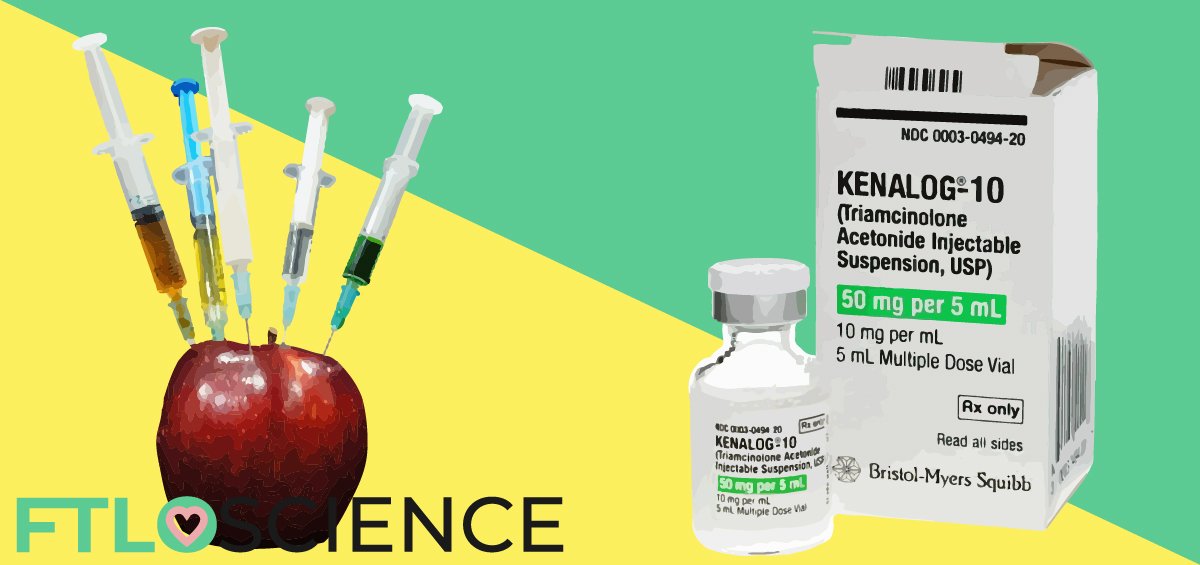You may have heard of injured athletes who are made to ‘play through the pain barrier’ with the help of ‘injections’, these are actually corticosteroids—the gold standard of anti-inflammatory medicine. While this is somewhat of a common practice in the world of sports to prevent players from missing a big game, their effectiveness and convenience have led to chronic use in some individuals, whether or not it is actually needed. But how do these painkillers actually work? And what are their longer-term effects?
What’s a Corticosteroid?
Overstretching of a joint can lead to damage to the ligaments surrounding it, also known as a sprain. The pain and swelling that results is the product of inflammation, the body’s natural response to injury. If the damage is minor, a combination of RICE (rest, icing, compression, elevation) can help the healing process. More extensive damage, however, requires medical intervention.
The first line of treatment is typically a non-steroidal anti-inflammatory drug (NSAIDs), available in both topical and oral forms. NSAIDs work by preventing the formation of certain chemicals that trigger inflammation. They are usually sold over-the-counter, with the most popular ones being aspirin, ibuprofen and naproxen.
In the 1920s, cortisone, a hormone produced naturally by the adrenal gland, was isolated and found to be an effective treatment for rheumatoid arthritis. The compound was commercialized by Merck & Co. in the 1940s, and not long after started to be used in all sorts of inflammatory conditions, including autoimmune diseases, dermatitis, and muscular sprains.

Cortisone belongs to a group of hormones known as corticosteroids, which happen to possess in common extremely potent anti-inflammatory properties1. Their versatility is showcased in the myriad of corticosteroid-based therapies available today, for a whole range of disorders. They can be administered topically, by inhalation, intramuscularly and even intravenously.
Their usefulness in treating ligament sprains was quickly exploited, as injuries of this sort can be notoriously difficult to shake off with conventional treatment. Corticosteroids used in this manner are administered via a hypodermic needle directly into the muscle (intramuscular injection), which reduces inflammation at the site.

Some Corticosteroid Biochemistry
Inflammation is the body’s initial response to a problem. When ‘bad stuff’ or an antigen, is signaled by the cells in an area, the immune system kicks in to direct blood flow to the affected site. As a result, this leads to a series of processes encouraging white blood cells and plasma to clear the site of dead cells and foreign matter, which ultimately encourages healing. While this is occurring, the pain and swelling also remind us to consciously keep the area away from further harm.
But sometimes, the body gets too carried away with its job and ends up overloading the blood vessels around the site. When this happens, the dead cells and fluids build up in the area and the inflammation doesn’t subside. The more waste is detected in the area, the more white blood cells are directed to the site, establishing a positive feedback loop of inflammation.
Corticosteroids bind to the cells at the affected site and enter the nucleus, where they can alter the genetic functions of the cell DNA. Since genetic material is the template for protein synthesis, corticosteroids can stimulate or inhibit this, acting as an ‘on-off’ switch.
Their primary function is to turn on the production of a protein, lipocortin-1, within the cell, which then inhibits the production of phospholipase A2, a key enzyme in inflammation2. Phospholipase A2 is responsible for the synthesis of prostaglandins and leukotrienes further down the inflammation pathway, molecules that directly cause inflammation and other immune responses.

Short and Long-Term Health Effects
In general, corticosteroid therapy is recommended for short-term, acute, non-systemic use. Recorded short-term safety incidents are limited to reversible and minor side effects such as skin pigmentation, decreased sperm count and fatigue4. Of course, there are those who need corticosteroids for an extended period of time, such as asthma patients, and recipients of organ transplants who need to suppress their immune system from rejecting it, to name a few of a whole host of disorders.
Corticosteroid therapies can be life-saving, but chronic use of steroid-based medicines carries the danger of potentially serious side effects; long-term use has been shown to increase the risk of peptic ulcers while aggravating existing ones5. Furthermore, corticosteroids affect the natural release of growth hormone in the body, with factors associated with growth – nitrogen retention, bone formation and collagen formation – inhibited after corticosteroid therapy6.

However, their ease of access and efficacy means corticosteroids fall under ‘quick fix’ treatments when it comes to sports-related injuries, able to ease pain almost immediately. Consequently, coaches or teams often recommend a corticosteroid injection to athletes who have suffered minor sprains so that they can continue playing and training.
In the long run, this can be detrimental to the joint and tendon structure, with studies showing that the elastic properties of tenocytes (tendon cells) are suppressed by corticosteroids, increasing the risk of future injury7.
On the other hand, chronic sports injuries can be difficult to treat otherwise; sometimes these injuries are simply stubborn inflamed joints that require a little push to heal. Additionally, intramuscular injection limits the amount of the drug that enters the bloodstream and affects other parts of the body.
Ultimately there is no denying that corticosteroids are the best at what they do–reducing inflammation–but should not be used as a replacement for rest and the body’s natural repair mechanisms.
Reference
- Brukner, P. (2012). Brukner & Khan’s clinical sports medicine. North Ryde: McGraw-Hill.
- Kragballe, K. (1989). Topical corticosteroids: mechanisms of action. Acta dermato-venereologica. Supplementum, 151, 7-10.
- Abraham, J. E., Harrington, P., Driver, K. E., Tyrer, J., Easton, D. F., Dunning, A. M., & Pharoah, P. D. (2009). Common polymorphisms in the prostaglandin pathway genes and their association with breast cancer susceptibility and survival. Clinical Cancer Research, 15(6), 2181-2191.
- Rotunno, A., van Rensburg, D. J., Grant, C. C., & van Rensburg, A. J. (2016). Corticosteroids in sports-related injuries: Friend or Foe. South African Family Practice, 58(6), 28-33.
- Conn, H. O., & Poynard, T. (1994). Corticosteroids and peptic ulcer: meta analysis of adverse events during steroid therapy. Journal of internal medicine, 236(6), 619-632.
- Buchman, A. L. (2001). Side effects of corticosteroid therapy. Journal of clinical gastroenterology, 33(4), 289-294.
- Rotunno, A., van Rensburg, D. J., Grant, C. C., & van Rensburg, A. J. (2016). Corticosteroids in sports-related injuries: Friend or Foe. South African Family Practice, 58(6), 28-33.
About the Author

Sean is a consultant for clients in the pharmaceutical industry and is an associate lecturer at La Trobe University, where unfortunate undergrads are subject to his ramblings on chemistry and pharmacology.




